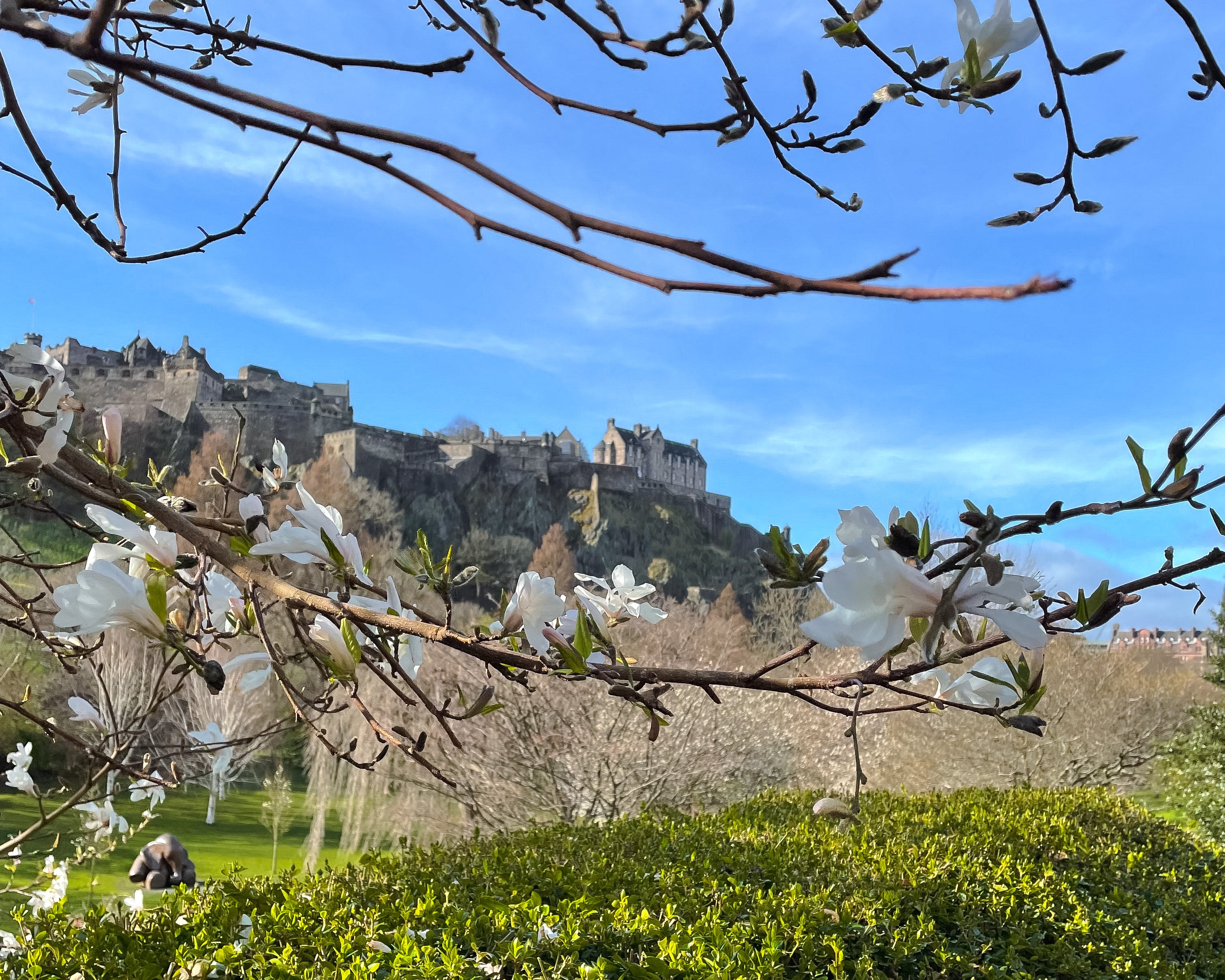5 Key Events that took place at Edinburgh Castle
23rd Jun 2022
By Mark Clement
It's hard to miss Edinburgh Castle when visiting Scotland's capital. Perched high above the rest of the city on Castle Rock, it's full of history that shaped Scotland. On our Secrets of Edinburgh's Royal Mile tour, you can tour Edinburgh Castle's grounds, before heading inside yourself to learn all about its history and the lives of the royals that resided there. Here are five key events that have taken place at the castle over the centuries:
1314 – Edinburgh Castle falls back into Scottish hands
During the Wars of Independence in the late 13th and early 14th centuries, Edinburgh Castle had been captured by the English and garrisoned by English troops. By 1314, the war was going well for the Scots under the leadership of King Robert the Bruce. Bruce sent his nephew, Sir Thomas Randolph the Earl of Moray, to Edinburgh with a force to re-take the Castle.
Randolph learned of a path up the rock face, which one of his men had used to visit a secret lover. So after dark his main force mounted a frontal attack on the Castle to provide a distraction, while Randolph himself and a small group and hand-picked men scaled the cliff and the curtain wall to surprise the garrison from behind.
After the re-taking of the Castle, Bruce ordered it destroyed – he was a guerrilla fighter who disliked fixed fortifications. But St Margaret’s Chapel was spared, which is why it’s the oldest surviving building in the Castle today. The fall of Edinburgh Castle was a key moment in the lead-up to the decisive Battle of Bannockburn later that year, at which Randolph commanded one of the Scottish divisions.
1440 – The Black Dinner at Edinburgh Castle
James II was one of a long line of Stewart monarchs to come to the throne as a child, being crowned at the age of six in 1437 (if you want to find out what happened to his father James I, come on our Hidden & Haunted tour). As such he was dependent on Regents and powerful nobles to rule the kingdom until he came of age. One of these was the Lord Chancellor, William Crichton.
One of the key rivals to Crichton’s power was the Douglas clan, a powerful family who owned a lot of land in the South of Scotland. Crichton realised his stewardship of the king was the key to the Douglas’ downfall – in essence he could use the young James II as bait.
So an invitation was issued to the 16-year old William Douglas, 6th Earl of Douglas, and his younger brother to a lavish feast in the king’s presence at Edinburgh Castle. The Douglas’s eagerly accepted, and walked right into Crichton’s trap. The feast itself was a glorious occasion, with wine flowing and great entertainment. But at the end, a black bull’s head, the symbol of death, was presented to the brothers. They were dragged out into the courtyard, given mock trials on trumped-up charges of treason, and then summarily beheaded.
The Black Dinner is said to have inspired the “Red Wedding” from George RR Martin’s Song of Ice and Fire, and the popular Game of Thrones TV series.
1566 – Birth of James VI.
In the aftermath of the brutal murder of her secretary David Rizzio, Mary Queen of Scots retreated to the safety of Edinburgh Castle. There on 19th June 1566 she gave birth to her son and heir, whom she named James. The small birthing chamber can be seen by visitors to the Castle today, and is lavishly decorated to mark the historic occasion.
James would be yet another child monarch, after his mother was deposed the following year. He would eventually prove to be a very effective king, despite his obsession with
witches which you may hear about on our tours. He’s also famous for ordering the translation of the King James Bible.
In 1603, when Elizabeth I of England died with no direct heir to her throne, James VI of Scotland also became James I of England, uniting the crowns. In 1605 he was the intended victim of Guy Fawkes’ infamous Gunpowder Plot.
1745 – The Castle resists the Bonnie Prince.
Following the overthrow and exile of James VII and II in 1680, supporters of the exiled dynasty became known as Jacobites – Latin for “followers of James”. There were several attempted Jacobite risings over the years, but the most famous came in 1745.
James’ grandson Charles Edward Stuart, popularly known as “Bonnie Prince Charlie”, landed in the Highlands and raised an army. The commander of the British Army in Scotland, General Sir John Cope, marched into the Highlands to try to intercept the Jacobites, but never made contact with them. Having given Cope the slip, the Jacobites now had a clear route to Edinburgh.
On 17th September 1745, the city fell easily to the Jacobites. Bonnie Prince Charlie entered the city to cheering crowds, and that evening saw one of the greatest parties in Edinburgh’s history as Jacobite soldiers and locals alike sang and drank the night away. Edinburgh Castle, however, remained in government hands and its garrison refused to surrender.
The Jacobite Rebellion would eventually end in defeat, at the Battle of Culloden in 1746. It has since been popularised in the Outlander books and TV series, and you can find out more on our Outlander tour.
1996 – Return of the Stone of Destiny.
For centuries, monarchs of Scotland were crowned on a coronation stone which legend held to be Jacob’s pillow, on which he rested his head when he dreamed of a ladder to heaven. In 1296, during the Wars of Independence, the stone was seized by Edward I and taken to London where it was fitted into a special coronation chair. The stone was briefly liberated by Scottish students in 1950, before being recovered four months later.
In 1996, John Major’s Conservative government attempted to stave off calls for a Scottish Parliament by returning the stone to Scotland. In a special ceremony, the stone was paraded up the Royal Mile on an open jeep, before being installed next to the Honours of Scotland in the vault of Edinburgh Castle, where it can be seen by visitors today. The strategy ultimately failed, as evidenced by the existence of the new Scottish parliament building at the bottom of the Royal Mile.
However, time may be running out to see the Stone of Destiny at Edinburgh Castle, as there are plans to move it to Perth, near its original home of Scone.
Intrigued? Get fast-pass Edinburgh Castle tickets and take a tour with us to uncover more of its incredible tales on our Secrets of Edinburgh's Royal Mile tour. We hope to see you soon!
Visiting Edinburgh? Sign-up to our newsletter and be the first to know what's happening in the city each month.

